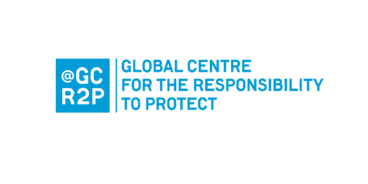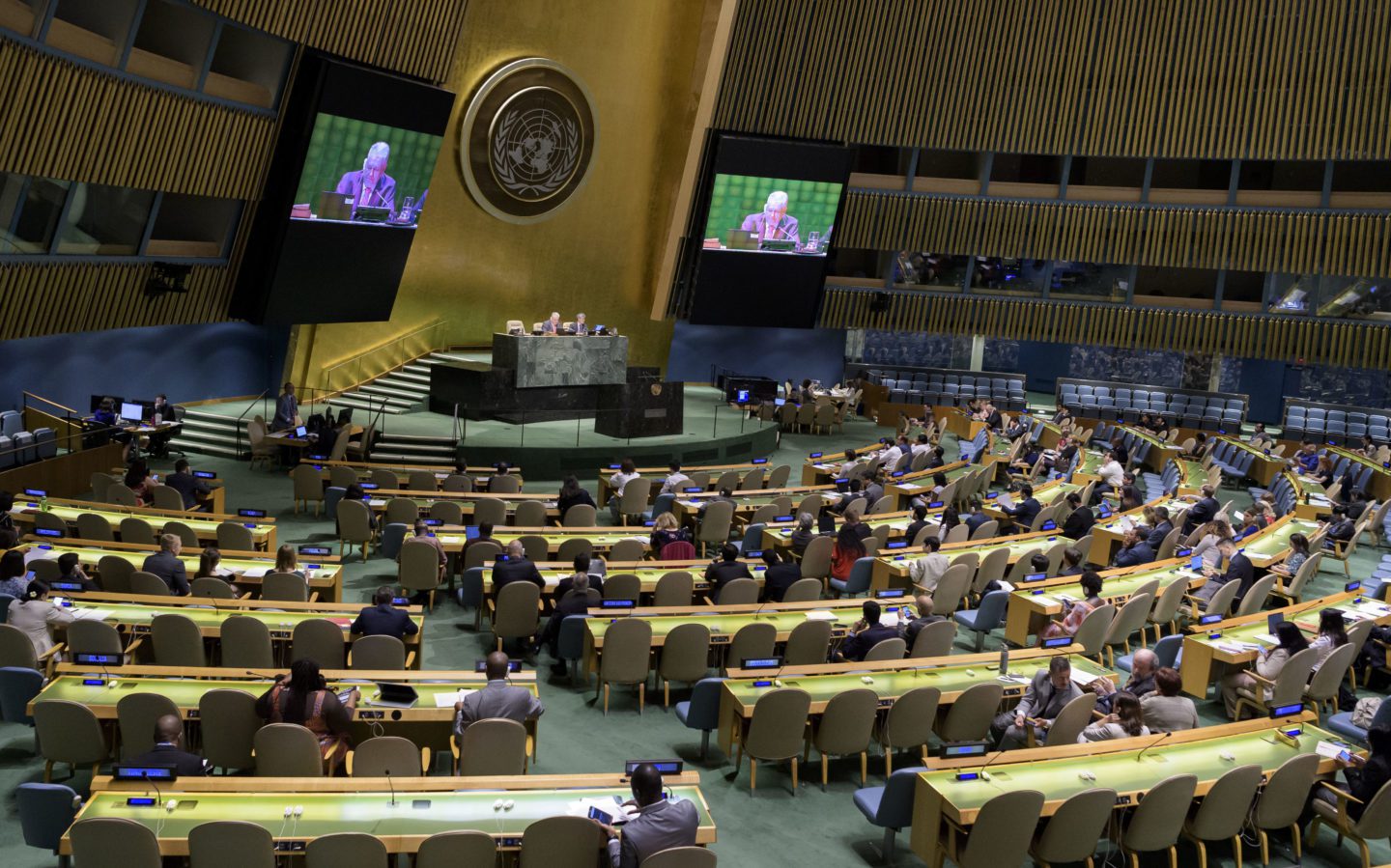
Summary of the UN Secretary-General’s 2019 Report on the Responsibility to Protect: Lessons Learned for Prevention
The eleventh report of the UN Secretary-General on the Responsibility to Protect (R2P) emphasizes the important role of prevention. The report takes stock of a range of measures that individual states and the international community can undertake while upholding their preventive responsibilities based upon best practices since the adoption of R2P at the 2005 UN World Summit. While acknowledging a growing number of contemporary atrocity situations around the world, the Secretary-General cautions that “there is a growing gap between our words of commitment and the experience of protecting vulnerable populations.” The report offers a number of practical policy suggestions based upon experiences of the last decade and serves as a call to action for member states and international institutions.
KEY POINTS
The Global Centre for the Responsibility to Protect would like to highlight the following key points from the report:
-
- The Secretary-General’s 2017, 2018 and 2019 reports have all highlighted that international trends in the number of situations featuring atrocity crimes, the commitment to multilateralism, and respect for international norms and laws for the protection of human rights are all “moving in the wrong direction.” Additionally, the international community continues to fail in its capacity to take early action to prevent the imminent threat of atrocities. This reality demands an even stronger commitment to upholding the principle of the Responsibility to Protect.
- States have undertaken a number of measures to strengthen their resilience to atrocity crimes. This includes the appointment of R2P Focal Points by more than 60 states and 2 regional organizations. In addition to the R2P Focal Point, numerous actors within the state have taken up the charge of atrocity prevention, including parliaments, ombudspersons, national human rights institutions and civil society.
- Regional organizations have also adopted a number of commitments aimed at supporting their members in upholding R2P. Such efforts could be strengthened through greater collaboration among such organizations, as demonstrated by UN-African Union-European Union trilateral cooperation.
- Nevertheless, the international community can do more to assist states as they address weaknesses in their capacity to prevent atrocities, including through systematically identifying atrocity risks in the Universal Periodic Review process and national reports to human rights treaty bodies, as well as through helping countries achieve the Sustainable Development Goals (SDGs), particularly Goal 16.
- Prevention can be more effectively achieved through a holistic approach that utilizes a wide range of tools. As a result, atrocity prevention benefits from connections with other protection agendas and global human rights commitments. Nevertheless, the best outcomes for early action and early response are realized when atrocity prevention and upholding the responsibility to protect are not subsumed within other priorities.
- Strengthening the rule of law and ensuring accountability for past atrocity crimes is not just an important part of bringing perpetrators to justice, it is also a means for facilitating non-recurrence and preventing further crimes.
SECTION II: TAKING STOCK OF PAST PRACTICE: LESSONS LEARNED FOR PREVENTION
In order to strengthen preventive action, in his 2017 report the Secretary-General emphasized the need for evidence-based insight into best practices and lessons learned on structural and operational measures to prevent atrocity crimes. Based upon past experiences, this section outlines a number of measures individual states and the international community may undertake, and the affect such actions may have on the prevention of atrocity crimes.
Prevention: The role of individual states
Mass atrocity prevention at the national level may constitute a number of initiatives aimed at strengthening and reforming domestic institutions – including the judiciary and human rights institutions – and implementing policies that build resilience, such as legislation aimed at the protection of minority populations. As a result, many actions that help mitigate the risk of atrocity crimes are often not undertaken under the label of “upholding R2P” or “preventing atrocities” as such. Regardless of how such initiatives are labeled, the Secretary-General suggests five principal areas for governments to consider:
Need to manage diversity as a strength rather than as a weakness. States can help prevent identity- related discrimination and violence by establishing laws and institutions that promote diversity and address the root causes of inequality, marginalization or exclusion.
Accountability and the rule of law. States can provide better protection for their population by strengthening respect for the rule of law. This can occur across three main areas of work, including ensuring equal access to justice, utilizing effective and legitimate security forces that respect the rights of the population while providing protection, and maintaining transparent and accountable governance structures.
Secure livelihoods. States can increase resilience to the economic risk factors for atrocities by implementing policies aimed at reducing economic inequalities and increasing women’s economic empowerment.
Vibrant civil society supporting a plurality of views. States should create an enabling environment for a plurality of views to thrive, which aids in the sharing of different perspectives and may facilitate a reduction in hate speech and incitement. Some best practices have included facilitating the creation of regional civil society coalitions who are invested in the prevention of mass atrocities, such as in the Western Balkans.
Guarantees of non-recurrence. States with a history of mass atrocity crimes must create a synergy between efforts aimed at atrocity prevention and sustaining peace, particularly initiatives that address the root causes of atrocities and programs for truth, justice, reconciliation and memorialization of past crimes. Specific initiatives to ensure non-recurrence include adopting human rights protections, ratifying relevant international legal instruments, ensuring education programs promote respect for diversity, and providing psychosocial support for survivors in a manner that is culturally and gender- sensitive. This is one area where the international community could uphold its Pillar II responsibilities by providing states with more technical and financial support.
Prevention: The role of the international community
The Secretary-General notes that there has been significant engagement by the international community in supporting long-term and structural prevention within member states. Nevertheless, the international community has had less success in generating a timely and resolute response when atrocities are imminent, and states are manifestly failing to protect their populations.
The Secretary-General describes a number of ways in which the international community can be more proactive with regard to taking early action.
Effective prevention is easier when undertaken before a situation escalates. The international community has a number of tools at its disposal for attempting to change the behavior of potential perpetrators, including high- level political dialogue, use of good offices, mediation, and negotiating transitional political arrangements. Such tools have been particularly effective when there has been coordinated action by the UN together with regional and sub-regional arrangements. However, the Secretary- General cautions against the risks associated with competing forums for mediation or inadequate enforcement of negotiated agreements.
The report notes that when atrocity crimes are imminent, direct action is required to address the capacity of perpetrators to commit crimes and to reduce the vulnerability of civilian populations. Such actions may include:
Addressing hate speech, including by monitoring content on social media and countering hate speech through news and radio programs.
Providing protection to civilians through deployment of United Nations peacekeeping operations. UN Peacekeepers provide direct protection to civilians in three main ways: protection through dialogue and engagement, provision of physical protection, and the establishment of a protective environment.
Providing support to national authorities with the aim of stabilization of a situation and strengthening their capacity to prevent atrocities.
Humanitarian action to help address the indirect effects of atrocity crimes, such as disease and malnutrition.
The Secretary-General also recommends that the international community support the enhancement of prevention at the grassroots level, including through:
Launching innovative violence reduction programs and the facilitation of community-to- community trust-building exercises such as mechanisms for civil society dialogue, early dispute resolution and information sharing.
Engagement with religious leaders and actors, particularly through the UN Plan of Action for Religious Leaders and Actors to Prevent Incitement to Violence that Could Lead to Atrocity Crimes.
Provide support to local human rights organizations that protect the rights of vulnerable populations and who advance reconciliation and social cohesion.
Provide support to women’s and youth organizations and ensure they are empowered to meaningfully participate in the promotion of transitional justice and reconciliation.
Decentralization of preventive efforts to ensure communities in marginalized areas are also engaged in peace and reconciliation processes.
The report further emphasizes that without sustained engagement by the international community, such initiatives may not be successful in the prevention of mass atrocities.
SECTION IV: LESSONS LEARNED
Based upon the best practices identified in the report, the Secretary-General outlined four lessons for the prevention of mass atrocity crimes.
- Atrocity crimes are preventable. When local, national, regional and international actors utilize the full range of diplomatic tools available to them, and do so in a timely and decisive manner, the successful prevention of atrocity crimes is possible.
- The best outcomes are achieved when atrocity prevention is made a priority. When atrocity prevention, rather than other agendas, is prioritized then it is easier to drive early action and ensure key states or institutions play an active role in prevention.
- Unity of purpose is essential to successful atrocity prevention. Prevention is most successful when a variety of actors are engaged who agree to a coherent and coordinated approach to prevention.
- In practice, the effectiveness of atrocity prevention is determined by a wide variety of factors that mainly relate to national attributes. A number of domestic attributes may affect the success of response, including commitment of political leaders to peace; state capacity to prevent; robustness of civil society; a culture of accountability; restraints on the activities of armed groups; and supportiveness of neighboring states.
SECTION V: CONCLUSIONS
The Secretary-General concludes by noting that while “there is a widening gap between the 2005 World Summit commitment to the responsibility to protect and the daily experience of vulnerable populations,” atrocity crimes do not need to be an inevitable consequence of the various crises confronting the world today. In upholding their primary responsibility to protect, states can implement measures to strengthen their national resilience to atrocities. The international community can also actively support states in implementing initiatives aimed at reducing atrocity risks and must do more to consistently translate early warning into early preventive action.
